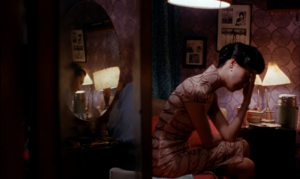This May saw the launch of Games Workers Australia (GWA). As a subsidiary of Professionals Australia – a union with an over-100-year history that counts its membership at roughly 18,000 people – GWA combines its membership of 400 alongside workers in industries like information technology, software development and engineering.
The launch of the union speaks to a growing interest in collective action, workplace conditions and labour rights within Australian games studios. Conversations and interest around unionisation have exploded since 2018, when GWA’s predecessor advocacy organisation Games Workers Unite was first launched, seemingly in response to myriad high-profile cases of workplace abuse, incessant ‘crunch’ (that is, the period towards the end of a game’s development cycle when employees are expected to put in extended overtime hours) and poor retention at some of the largest studios in the world. However, in the case of Australia, the unionisation conversation has grown alongside unprecedented funding in the form of grants and incentives from both state and federal governments, such as Screen Australia’s A$6 million fund for small-to-medium studios, VicScreen’s A$40 million digital production fund and the 30 per cent Digital Games Tax Offset announced by the federal government in May 2021.
The fact of the matter is that the Australian games industry is growing in more ways than one, and it’s a growth that the new union welcomes. GWA co-convener Maize Wallin tells me, ‘More jobs are great; we love more jobs,’ but points out that problems in the Australian games industry run deeper. In a plea clearly born of experience, they say that the industry desperately needs more long-term senior workers and mentors. This is another important area that has been left lacking in Australia; Wallin, who is non-binary, points to their own experience as a marginalised worker in the industry as part of what drew them to labour organising in the first place.
One key issue is financial literacy. As GWA points out, new graduates entering the field have next to no curriculum-based financial-literacy training in their courses, leaving them defenceless in an industry still rife with sham contracts – that is, agreements whereby workers are contractors on paper, while still being treated like employees in most other respects – and losing out on benefits that employees deserve, like superannuation and leave. Combine the fraught nature of contracting in games labour with the fact that 50 per cent of workers in the roughly 2000-person-strong Australian games workforce are freelancers, and the result is careers in games only averaging five years. The fact that the industry is composed of so many insecure workers drives home the need for a robust games workers union.
As for GWA’s focus moving into the future, Wallin tells me about the union’s intention to cultivate equitable workplaces for the future of the Australian industry. This involves improving workplace cultures as well as generating possibilities for different business structures, such as co-ops (a model practised by Sydney-based studio Inflorescent Games). Other key aims include establishing industry-wide standardised rate cards – to ensure equitable income for all freelancers in the labour market – and fostering improved graduate financial literacy by speaking directly with educators and students in the classroom.
Put simply, all the growth that the Australian games industry and its workforce stands to achieve has to be sustainable – working in tandem with an improvement in workplace conditions and treatment – if it is to fix the issues that underpin the cutting short of so many Australian games careers. The establishment of GWA is one major step in that direction.





